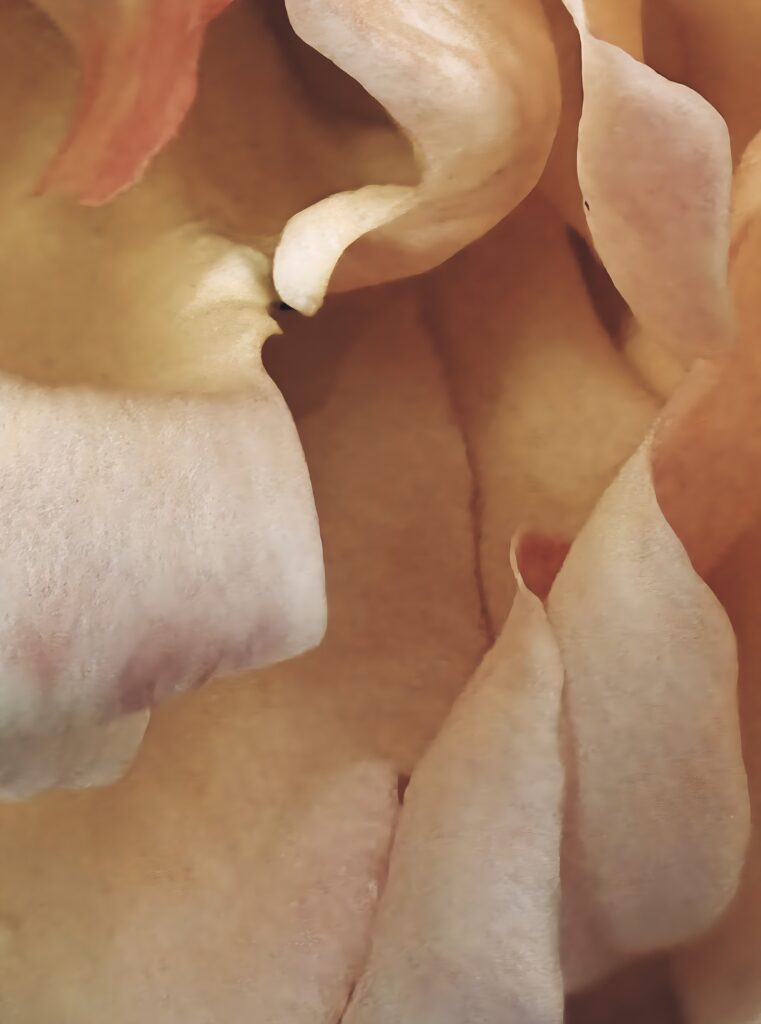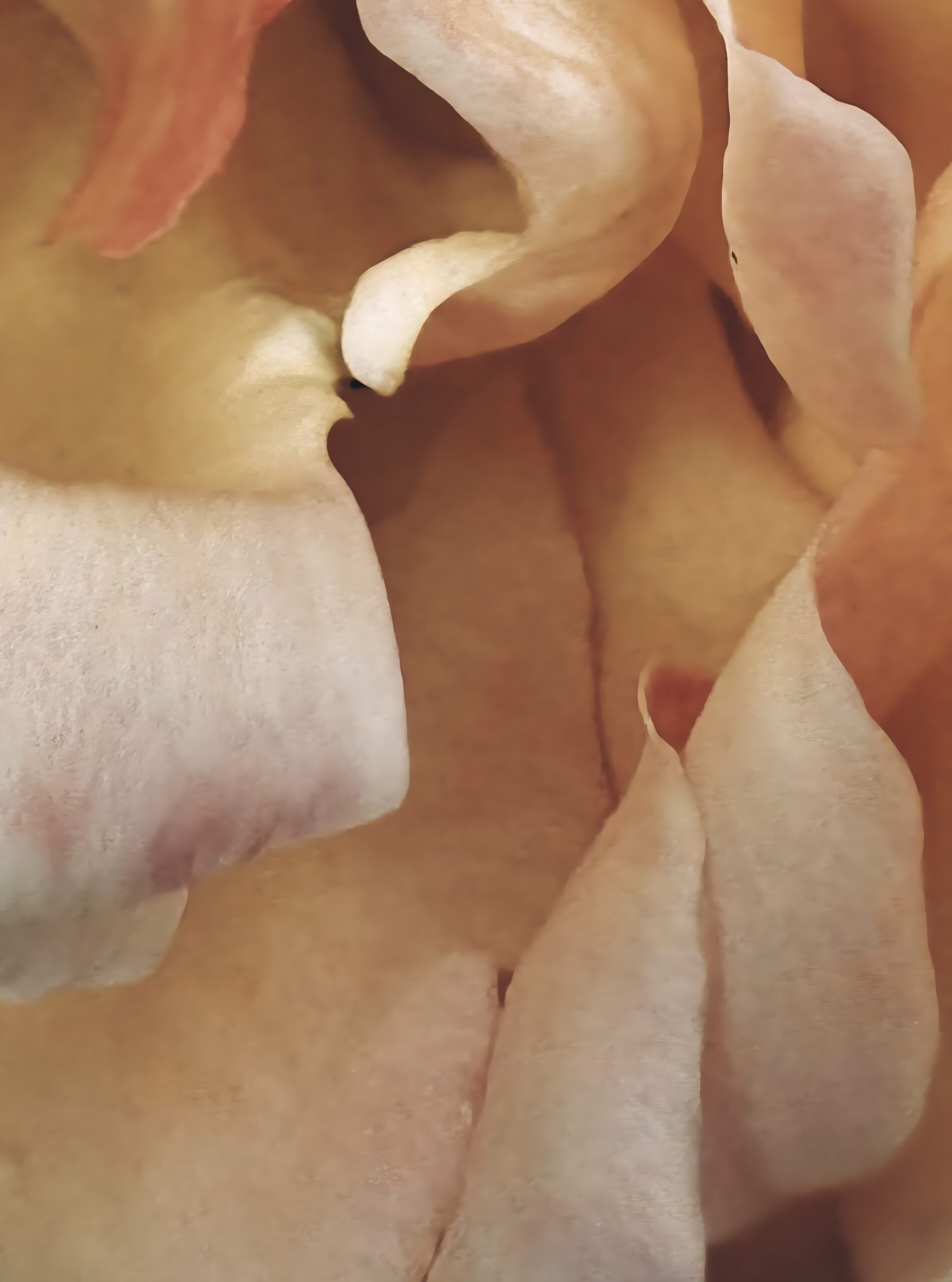Visual Analysis
This photograph immerses the viewer in a world of softness, form, and subtle light, transforming the petals of a flower into an abstract study of texture and tone.
- Composition: The close-up perspective fills the frame entirely, removing external context and focusing purely on the natural curvature and folds of the petals. The absence of sharp lines or distractions invites the viewer into a contemplative state.
- Light and Shadow: Gentle, diffused light plays across the petals, creating a quiet interplay of highlight and shadow. The soft illumination accentuates the petal’s velvety surface and organic edges, bringing depth and movement to a still subject.
- Color: A serene palette of cream, peach, and blush tones creates a sense of warmth and tranquility. The colors transition seamlessly, like a whisper—subtle and fluid.
- Texture: The surface of the petals, captured in detail, appears both soft and strong. The delicate veins and folds speak of nature’s precision, while their fragility evokes impermanence.
- Perspective: By isolating the subject and removing visual context, the petals transcend their identity as “just a flower.” They become symbols of quiet form and ephemeral beauty.
The Zen Reflection: Form without Form
This image is a meditation on the concept of impermanence and simplicity—two central pillars of Zen philosophy. The petals, caught in their fleeting bloom, remind us that beauty exists only because it is transient. Their edges curl, their colors soften, and their stillness holds within it the whisper of movement—life unfolding, life fading.
In Zen, this is Wabi-sabi, the beauty of imperfection and impermanence. The petals do not strive to be perfect; they simply are. They exist in their natural form, momentarily perfect and inevitably changing.
The soft light, which carves depth into their surfaces, teaches us to see with new eyes. Where we might pass by a flower without thought, here we are invited to pause. To notice. The gentle curves of the petals, the subtle shadows—they become a gateway to mindfulness, an exercise in shikantaza, the Zen practice of “just sitting.” In this state, there is no judgment, no seeking—only presence.
Practical Photography Insights
This photograph demonstrates how minimalism and close attention to detail can transform the ordinary into the extraordinary:
- Simplify the Subject: Filling the frame with a single subject removes distractions and draws attention to form and texture. This minimalist approach brings a meditative quality to the image.
- Work with Soft Light: Diffused natural light is ideal for organic subjects. It softens harsh contrasts and enhances the subject’s textures without overpowering them.
- Focus on Texture and Form: Petals, with their delicate veins and folds, offer a wealth of visual detail. Macro photography captures these details beautifully, encouraging the viewer to engage with the subject on a deeper level.
- Embrace Imperfection: The natural asymmetry and slight irregularities of the petals add to their charm. Don’t chase perfection—allow the subject to remain true to its natural state.
Reflections
This photograph invites stillness. In the softness of the petals, there is a lesson: life unfolds moment by moment, delicate and unhurried. The petals will not remain as they are; their beauty is not eternal. Yet their impermanence does not diminish them—it enhances them.
The Zen master might say, “Sit with what you see.” In this image, the practice is clear. Sit with the light, the shadows, the curves. Sit with the petals’ quiet simplicity. For a moment, let them be your world. The mind stills. The boundaries of self dissolve.
Here is the flower—soft, fleeting, perfect.
Here is you—soft, fleeting, perfect.
There is no separation. Only this moment.

